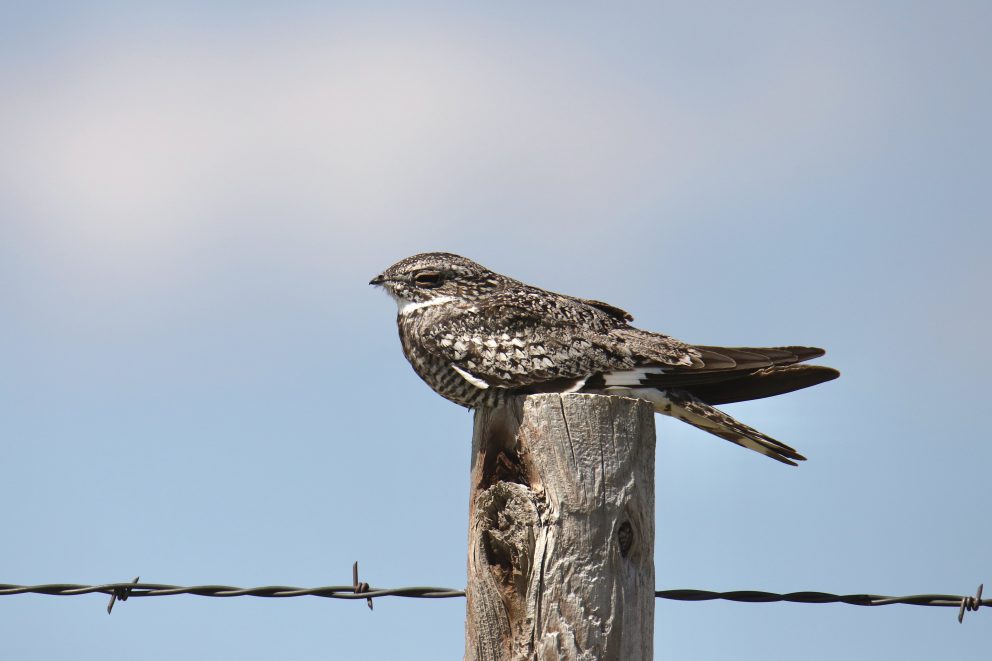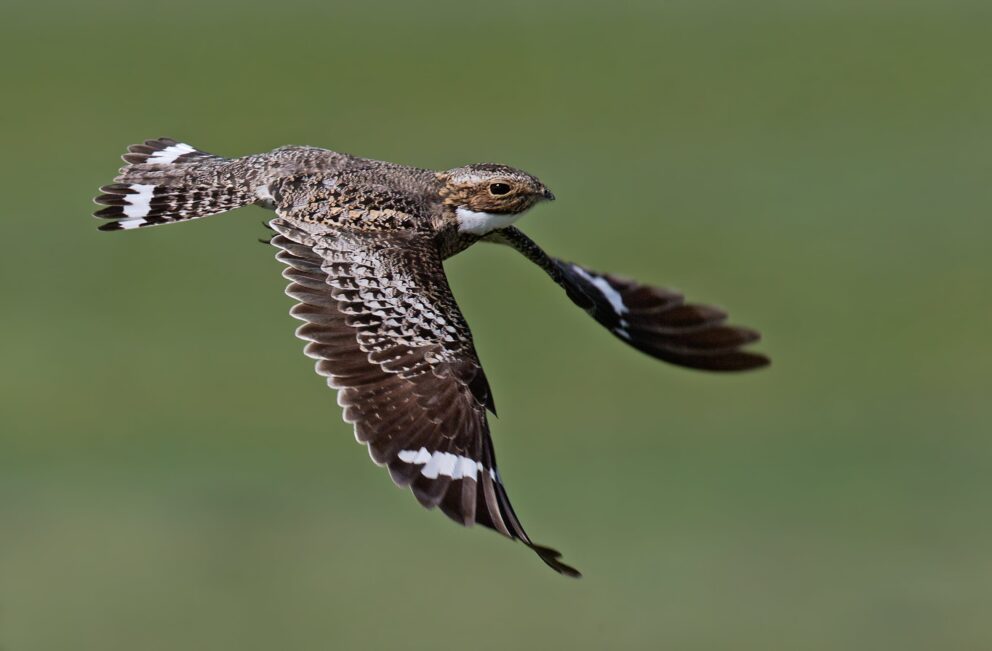- SCIENTIFIC NAME
- Chordeiles minor
- CLASSIFICATION
- Bird
- LIFE SPAN
- 4-5 Years
- SIZE
- 8.7-9.4” | 0.14-0.22lbs
- STATE CONSERVATION STATUS
-
- Priority Species
- FEDERAL CONSERVATION STATUS
- Least Concern
- GAME STATUS
- Non-Game
- GAME TYPE
- None
- Washoe
- Humboldt
- Pershing
- Churchill
- Mineral
- Lyon
- Douglas
- Carson City
- Storey
- Elko
- Lander
- Eureka
- White Pine
- Esmeralda
- Nye
- Lincoln
- Clark
Habitat & Range
Common Nighthawks are found across the northern portion of Nevada, but are long distance migrants often found outside of their range. They are most visible when they are hunting for insects on the wing; found over open areas near woods or wetlands, wherever insects are present. They can sometimes even be spotted hunting in flight in erratic looping patterns in front of well-lit billboards and street lights. These birds are crepuscular, meaning they are active at dusk and at dawn. It’s common to spot them nesting on the ground or in open areas during the day, including forest clearings, gravel bars, sand dunes, even open grasslands. They can also rest during the day in low shrubs or on tree branches.
- Developed Landscapes
- Grasslands
- Upland Forests
Threats
- Habitat Loss
- Pesticides
Natural History
Common Nighthawks are insectivores, eating flying insects almost exclusively. They are most active at dawn and dusk, and hunt by opening their tiny beak and inhaling insects using their bristle lined mouths. They often take advantage of insect swarms around streetlamps and other urban structures. Using their long, pointed wings they can make acrobatic movements to maneuver to pursue prey.
Fun Facts














